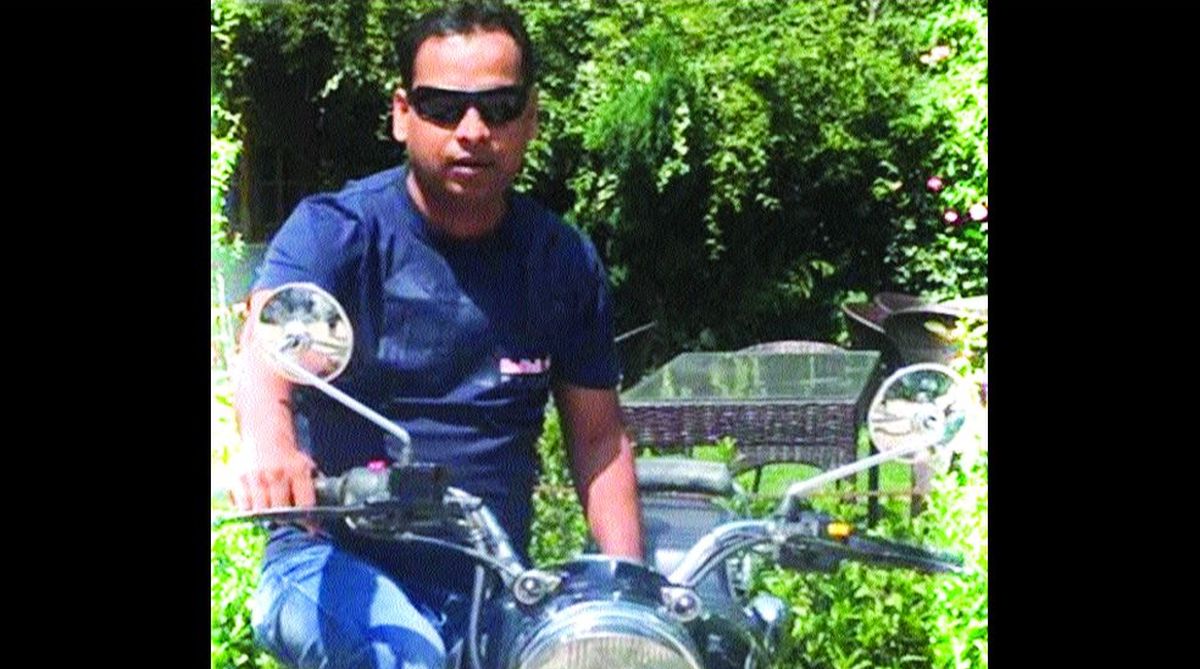India’s largest state Uttar Pradesh (UP) and its capital city Lucknow are still struggling to come to terms after the cold-blooded killing on September 29 of Vivek Tiwari, a 38-year old Apple executive. Tiwari was allegedly shot dead by two policemen (Constables Prashant and Sandeep Kumar) near Gomti Nagar area when he was dropping his colleague Sana Khan home, after the launch of Apple’s latest product. Vivek Tiwari’s untimely and uncalled-for death has rendered his wife and children helpless and pushed them to despair and grief.
The facts are that Tewari was fatally shot by the policemen (specifically, by Constable Prashant) and prima facie, there is no evidence yet to suggest any provocation to the killing. There are, however, conflicting versions of the sad incident. The constables allege that Vivek tried to run them over with his SUV, prompting them to fire in ‘self defence’ – an argument that seems feeble and far from convincing. Tewari’s colleague Sana Khan, on the other hand, alleged that the police action was unprovoked.
Advertisement
In the meantime, a Special Investigation Team (SIT) has swung into action, with a complement of ballistic aids to delve into the details and get to the bottom of this killing. The accused are already lodged in prison. CCTV footage received from a vantage location near UP Rajya Nirman Shahkari Sangh could offer valuable clues – careful scrutiny may clarify the circumstances leading to the tragedy. A magisterial probe is also underway, which is expected to take the investigation to its logical conclusion.
It will not be out of context to mention here that UP police investigations have in the past not met necessary standards of professionalism. The Arushi and Hemraj murder case, for instance, is still unsolved after a decade, with much ambiguity lingering in the minds of experts and public alike. Things should have improved since then.
Although UP CM Yogi Adityanath has assured all manner of compensation to Tewari’s next of kin, including a job and monetary assistance, Vivek will not return. The CM also offered to have the killing investigated by the CBI. That would have been the best assurance to the bereaved family and to people at large.
It is hoped that with an in-depth investigation and all-inclusive application, such an incident will not recur. The public needs this reassurance in good measure or innocent occupants of any car will always be apprehensive while crossing a police check post manned by burly policemen armed with weapons.
At this point, it is pertinent to reflect on the psychology behind the policemen being exceedingly trigger happy and resorting to ‘shoot to kill’ at the slightest opportunity. Tewari and Khan were no terrorists and as per eyewitnesses, did not seem to have done anything to arouse the suspicion or wrath of the cops to provoke the extreme action of opening fire.
The professional point worth pondering here is whether police training in the appropriate use of firearms is flawed. Or do the police (barring exceptions) think nothing of recklessly using a gun, indifferent to the possible deadly consequences? The training curriculum must ensure that crucial aspects like exercising discretion and restraint with a cool head in tricky scenarios are inculcated in all police recruits. This could minimise avoidable lapses as seen in the Vivek Tewari case.
Such training is all the more critical given that freshly inducted constables, armed with a weapon and the unmissable power of the “vardi” or khaki uniform are often very conscious of the unbridled authority they wield, and feel themselves to be above the law. This reflects in their drastically changed body language.
The newly acquired sense of unquestionable, absolute power, coupled with the fact that many are not recruited on merit alone, results in policemen becoming formidable and intimidating, rather than protectors of civilians. We routinely hear the general public and tax payer narrating stories of police misbehaviour, less often of a willingness to redress grievances.
Several serving police and retired police personnel of the UP cadre shared on conditions of anonymity that there are multiple causes for such extreme brash conduct by the UP police. First, a large number of cops are recruited not necessarily on merit but through unfair means such as using political connections and more likely money power. This practice may have ceased to exist in the present political regime but those recruited in the past through tainted means may be already thriving in the force.
This image must be shed once and for all. We have been hearing for long about impending police reforms which may improve the force’s public image. Controlling this psychological element is inevitable for creating a friendlier police persona.
Of course, we must ensure that the welfare of constables is not forgotten. Their poor working conditions, long hours, and endless responsibilities must be improved at the earliest to create a congenial working atmosphere for these foot soldiers who are custodians of public safety and security.
No doubt, UP is a large state and the police force is equally huge, making it unwieldy to manage. But a reassuring and pleasant public image, especially at the police station and at check points, is critical. At this point of time, the UP CM seems to be displaying the intent to curb crime and run a people-friendly police force. His DG Police is a dedicated and competent officer with experience of nearly 35 years. It would augur well if the team undertakes the exercise of weeding out undesirable elements from the force through periodical psychological tests and revamps the recruitment procedure to induct those with a people-friendly, empathetic disposition.
This could help reduce cases of “trigger happy” misadventures as seen in the unfortunate death of Vivek Tewari, and at least partially restore the people’s faith in their police force.
The writer is a former IPS officer and a security analyst. Views are
personal.
















